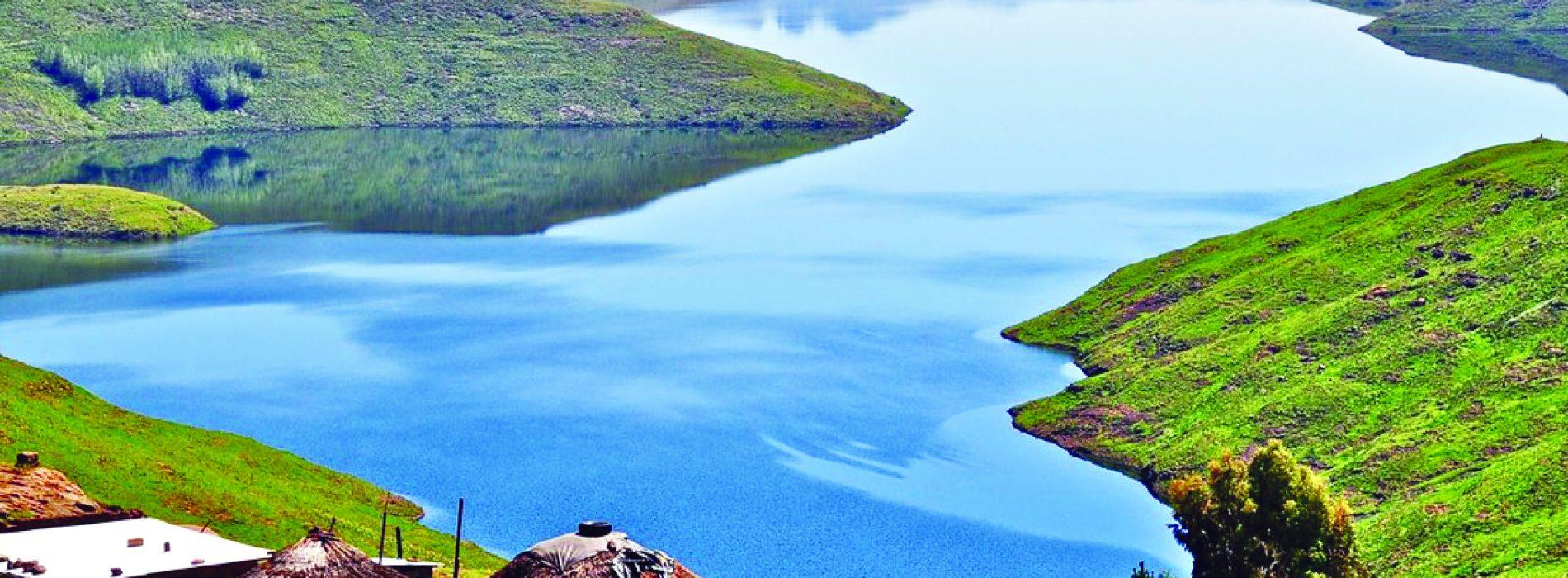Africa-Press – Lesotho. Juliette Letotokoto, a recently widowed farmer, stands on her small plot of land on the outskirts of Lesotho’s capital and takes stock of her crops. It’s late May, and by now she’d typically have a rainbow of plants to harvest: cabbage, peppers, chillies, beetroot.
But today the predominant colour is pale brown, a hue found in the desiccated corn stalks she’s piled up like miniature tepees in her yard and the tired rows of others she’s yet to cut back.
Usually, Letotokoto would have three full bags of corn to sell at a market this time of year. But the rains didn’t come in the summer, and now she can’t even fill one.
“The drought really ruined everything,” she says.
Lesotho, a small mountain kingdom surrounded by South Africa, was one of the nations hardest hit by the 2015 drought that caused Southern Africa’s driest growing season in 35 years.
The El Niño driven-phenomenon sparked a 47 percent drop in maize production, the country’s staple food, during the spring harvest. At least 709 394 people – close to 50 percent of the population – are estimated to need food assistance through April 2017, according to the United Nations.
“It’s a serious food crisis,” says Paul Sitnam, director of Southern Africa El Niño emergency response for World Vision, an international Christian aid agency.
“In some time it may lead to the start of starvation. I don’t think we’ve reached that level yet, but it’s a high possibility that it will happen in the next few months.
”
For the people of Lesotho, a lack of rain doesn’t just mean crop failure and less food. It means the taps run dry and the rivers shrink, endangering livestock and forcing people to drink from riskier sources, leading to illness.
It also means more attention to what some consider a cruel irony: Lesotho actually has plenty of water – it’s just sending much of it to South Africa. About 130km from Letotokoto’s small stone house sits the Katse Dam, the second-largest water barrier in Africa.
It’s part of a controversial development project called the Lesotho Highlands Water Project, the biggest water transfer scheme on the continent and one of the largest of its kind in the world. Lesotho, home to the headwaters of the Senqu River, had always been rich in water. But parts of South Africa are perpetually parched.
In the 1980s, the two countries struck a deal to send much of Lesotho’s water to South Africa’s dusty, dry Gauteng province, where it would fuel the mines and other industry around Johannesburg, the country’s economic hub.
The deal, financed in part by the World Bank, was hardly an agreement between two democracies: South Africa was an apartheid state at the time and Lesotho had recently undergone a military coup, which was likely orchestrated by its larger neighbour.
As a result of the bargain, the thinking went, Lesotho would collect millions of dollars in fixed payments each year, a boost for a nation where more than half of the population lives in poverty. In addition, the country would receive a hydroelectric station allowing for affordable electricity and development perks like paved roads.
“It has put Lesotho on a path toward greater development,” says Lesley Wentworth, programme manager at the South African Business Forum, who wrote a case study about the project during her time at the South African Institute of International Affairs.
But the path has been anything but smooth. A development fund set up to accompany the project failed because of political meddling. Today, electricity is produced at lower levels than expected and is so expensive that much of the country still relies on candles, paraffin and firewood.
High-quality roads climb up and over mountain passes, but they are barren in the countryside, where donkeys and goats make up most traffic. At the time of the agreement, it was considered a given that Lesotho’s rivers would stay full with rain and melted snow.
It was an era before tense climate summits and 24-hour news coverage of cataclysmic weather events – a time when fewer people believed the climate was changing. And then, of course, it did.
In the last few decades, Southern Africa has experienced higher temperatures and lower, inconsistent rainfall – a trend predicted to continue, says Dieter Gerten, chief hydrologist at the Potsdam Institute for Climate Impact Research.
Aside from normal global warming, the region must contend with the disastrous effects of El Niño. The most recent climate pattern was among the three strongest ever recorded, causing everything from floods in California to drought in Papua New Guinea.
Some scientists, like Gerten, suspect El Niño will only become more severe as global warming continues. Letotokoto, who has lived through 76 summers and 76 winters in Lesotho, says erratic, severe weather patterns are the new normal – a trend she blames on climate change.
“This is not how I grew up,” she says.
“Sometimes in the summer we are extremely cold like it’s winter, and the winters are very cold. It’s not good.
”
Like other Basotho frustrated by water shortages and yellowing highlands, Letotokoto talks of the Highlands Water Project with disdain.
“Lesotho made a mistake to give South Africa water because we don’t have it,” she says.
“The government should stop, though that will never happen.
”
It’s impossible to go back in time to see what Lesotho’s fortunes would be without the Highlands Water Project. Global warming and drought would still be occurring. But Wentworth likes to imagine a scenario with a different kind of water deal.
“If there had been better planning and provision for adjustment through the agreement, there could have been adequate water for both communities,” she says.
Instead, thanks to the changing climate, she believes South Africa is importing Lesotho into water scarcity. Lesotho’s government has taken some steps to address the crisis.
The treaty allows for a “predetermined volume of water that accumulates annually” to be released in drought conditions, and the Lesotho government has indeed released some water from its dams, according to the Lesotho Highlands Development Authority.
In late 2015, the government unveiled the Metolong Dam, which is intended to provide potable water to two thirds of the population in and around the capital.
The project is still ongoing, however, and in the meantime those not benefiting from the infrastructure have had to walk long distances for clean water, tamper with existing pipes or turn to sources like contaminated springs.
Lesotho’s experience with water may hold lessons for other developing countries, the areas experts say are destined to suffer the most from climate change.
“If current water management policies persist, and climate models prove correct, water scarcity will proliferate to regions where it currently does not exist, and will greatly worsen in regions where water is already scarce,” according to High and Dry, a 2015 World Bank Report.
Aside from implementing forward-thinking, efficient domestic water policies, developing countries may want to approach international water deals with circumspection.
For countries like Lesotho, flexible-term deals may be better than long-term deals, Wentworth says. Nations need the ongoing ability to assess demand, diversify risk and renegotiate.
Citizen feedback is crucial. “I think it comes back to the issue around open dialogue at early stages in the project,” she says. “When you are negotiating a deal you have to bring everyone to the table. You have to tell communities what the anticipated impact will be, positive and negative – it’s their water.”






